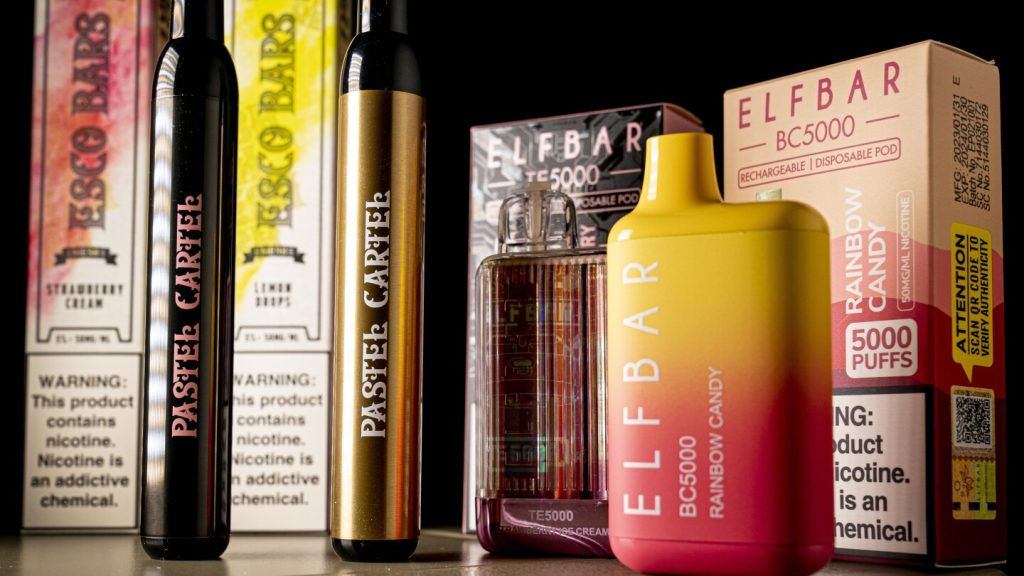Government officials reported a significant decline in teenage vaping rates, with fewer adolescents using unauthorized e-cigarettes this year compared to the last decade. The latest survey showed that the teen vaping rate fell to under 6%, down from 7.7% in 2023, with more than 1.6 million students reporting vaping in the past month. The decrease in teenage vaping was mainly driven by a half-million fewer high school students using e-cigarettes, while vaping among middle schoolers remained unchanged at 3.5% of students. FDA’s tobacco director emphasized the need for continued efforts to reduce youth use of e-cigarettes.
Despite the decrease in teenage vaping, sales of flavored nicotine pouches like Zyn among adults have surged. These pouches, which release nicotine slowly when placed along the gumline, come in flavors like mint and cinnamon. The latest U.S. survey shows that 1.8% of teens are using nicotine pouches, with this rate largely unchanged from the previous year. Health officials expressed vigilance and indicated that they are closely monitoring the evolving tobacco product landscape to address any potential uptick in youth use.
The federal survey involved over 29,000 students in grades 6 through 12 and focused on vaping products and nicotine pouches. The decline in teenage vaping was attributed to recent age restrictions and more aggressive enforcement against retailers and manufacturers, including Chinese vaping companies that have been illegally selling their products in the U.S. Use of popular e-cigarette brands among teens, such as Elf Bar, fell following FDA warning letters to stores and distributors selling the brightly colored vapes in fruity flavors. American e-cigarette brands like Vuse and Juul were also significant among teen vapers.
In 2020, FDA regulators banned fruit and candy flavors from reusable e-cigarettes like Juul, with only menthol and tobacco flavors now available. However, the ban did not apply to disposable products, leading companies like Elf Bar to fill the gap with flavored disposable e-cigarettes. Some key findings from the report include that about 26% of current e-cigarette users vape daily, nearly 90% of students who vape prefer flavored products, and Zyn is the most common nicotine pouch among teen users. The report also highlighted the shift in youth tobacco and nicotine trends, with a focus on vaping and nicotine pouches.
Overall, health officials emphasized the need for continued efforts to reduce youth use of tobacco and nicotine products, acknowledging the progress made in decreasing teenage vaping rates. The enforcement of age restrictions and crackdown on illegal sales by Chinese vaping companies have contributed to the decline in teenage vaping. However, officials remain vigilant and are closely monitoring sales trends and the evolving tobacco product landscape to address any potential challenges. The full publication of the survey will include rates of cigarette and cigar smoking, which have also reached historic lows in recent years, reflecting a positive trend in youth tobacco use.


